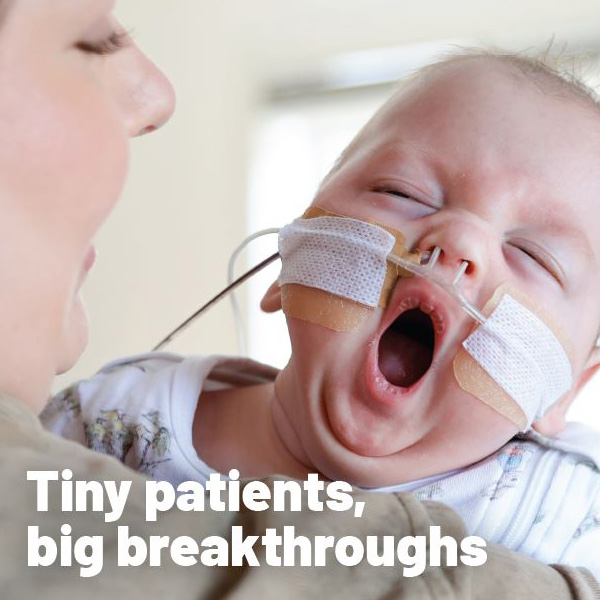Researchers identify new syndrome leading to intersex
By Hudson Institute communications. Reviewed by Professor Vincent Harley

Hudson Institute sex genetics experts Professor Vincent Harley and Dr Stefan Bagheri-Fam have led an international study which identifies a new rare disorder that forms another piece of the puzzle in understanding why some people are born intersex.
People who are intersex have reproductive organs, sexual anatomy or chromosome patterns that do not fit the typical definition of male (XY) or female (XX).
The study, published in the journal, Human Molecular Genetics, shows how a mutated form of the FGFR2 gene, already known to cause craniosynostosis (where the joints between the bones of a baby’s skull close before it is fully formed), can also cause XY sex reversal.
The study identifies a new intersex syndrome, called Craniosynostosis with Sex Reversal (CSR).
“The umbrella term ‘intersex’ has many genetic causes, the majority of which go undiagnosed,” Professor Harley said.
“Our team has identified how a mutation in the FGFR2 gene can concurrently cause craniosynostosis and XY sex reversal and as a result, we have identified a new syndrome called CSR.”
Researchers analysed genetic data from a German patient who, as a teenager, was diagnosed with the form of intersex called XY gonadal dysgenesis.

Genetic sequencing revealed that the patient carried the mutated FGFR2 gene, already a known cause of craniosynostosis.
The question remained whether the FGFR2 mutation was also responsible for the XY male-to-female sex reversal. The breakthrough came when Hudson scientist and lead author of the paper, Dr Stefan Bagheri-Fam, working with Yale University researchers studied mice with a very similar mutation.
“One to two per cent of live births are intersex, which can result in psychological trauma, infertility, lifelong endocrine care, multiple surgeries and increased risk of conditions like gonadal cancer,” Professor Harley said.
“By identifying the genetic causes, clinicians are better equipped to precisely treat and manage the health risks and conditions associated with specific genetic intersex conditions.
This story received the following media coverage
-
Herald Sun, Gender mystery clue – Intersex breakthrough hope for early diagnosis, October 1, 2015. Read the full story here.
-
ABC Melbourne 774, Breakfast program with Red Symons, September 29, 2015.
-
Australian Life Scientist, A new genetic cause for intersex, September 29, 2015. Read the full story here.
-
SBS News online, New research provides clues to why some people are born intersex, September 28, 2015.
A study by Hudson Institute researchers discovers genetic links between a form of skull abnormality and XY sex reversal. Read the full story here.
This research was supported by | National Health and Medical Research Council (NHMRC) Australia, and the US National Institute of Dental and Craniofacial Research
Journal | Human Molecular Genetics
Title | FGFR2 mutation in 46,XY sex reversal with craniosynostosis
View publication | https://doi.org/10.1093/hmg/ddv374
About Hudson Institute
Hudson Institute’ s research programs deliver in three areas of medical need – inflammation, cancer, women’s and newborn health. More
Hudson News
Get the inside view on discoveries and patient stories
“Thank you Hudson Institute researchers. Your work brings such hope to all women with ovarian cancer knowing that potentially women in the future won't have to go through what we have!”





